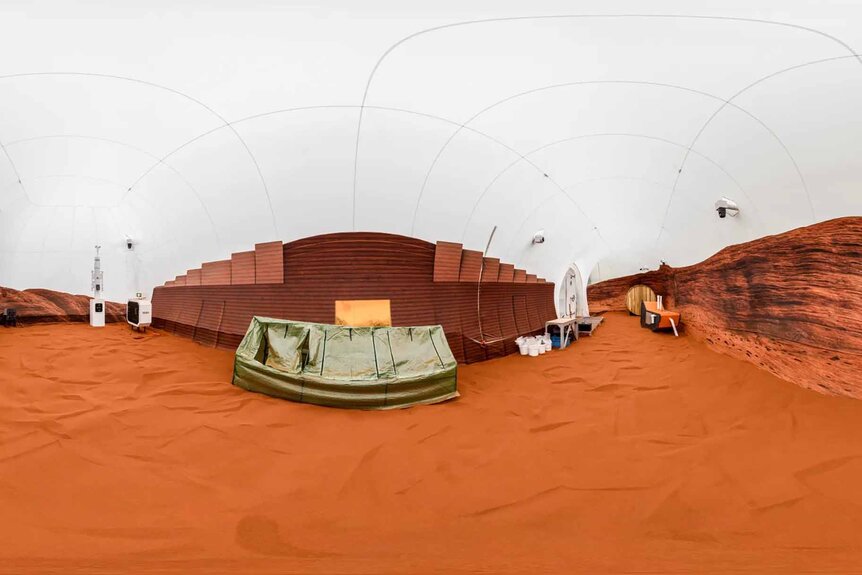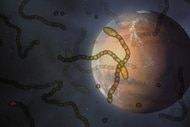Create a free profile to get unlimited access to exclusive videos, sweepstakes, and more!
CHAPEA Astronauts "Return" from NASA's Year-Long Simulated Mars Mission
All the challenges of Mars, without the commute.
Zeek Earl and Chris Caldwell’s 2018 sci-fi thriller Prospect (now streaming on Peacock) follows a spacefaring father-daughter duo searching for valuable gems on an alien moon. The air is toxic, and the environment is deadly, but those are only the expected dangers. Finding their fortune among the stars turns out to be more difficult and more life threatening than they anticipated.
In the real world, you can’t always plan for what you’ll encounter when you visit the grocery store, let alone an alien world, but that won’t stop NASA from trying. Recently, the agency completed the first of three planned Crew Health and Performance Exploration Analog (CHAPEA) missions. The CHAPEA missions are simulated year-long Mars missions, happening here on Earth, intended to prepare for the hopeful eventuality that people will visit the Red Planet for real in the relatively near future.
For More on Mars:
Meet the Moss That Could Help Terraform Mars
Scientists Are Holding Their Breath for Samples of Fresh Martian Air
A Mission to Mars Could Destroy Astronauts’ Kidneys
The Crew of NASA’s CHAPEA Simulated Mars Mission Emerges After 378 Days
The crew of CHAPEA-1 –– Kelly Haston, Anca Selariu, Ross Brockwell, and Nathan Jones –– sealed themselves inside their habitat on June 25, 2023. They spent the last year and change pretending to be Martians, then emerged on Saturday July 6, 2024, after 378 days in an artificial Martian biodome.
Their 1,700-square-foot habitat, dubbed Mars Dune Alpha, was 3D printed in place at Johnson Space Center in Houston, Texas. The construction methods used are similar to those which might be used to build structures on the Moon and Mars, using materials found on-site, instead of launching everything in advance.
Once inside, the crew had a variety of responsibilities including testing NASA’s planned space food system. That included growing, harvesting, and eating crops all inside a closed environment. NASA was also paying close attention to the crew’s physical and behavioral health throughout the mission.
Being isolated was only the beginning. During their year-long stretch on pseudo-Mars, the crew was under as many Martian constraints as possible. There were sometimes limited resources or equipment failures and there were always communication delays. Communication between Earth and Mars is at the mercy of the light speed limit and signals can take between 4 and 24 minutes to cover the distance, depending on where each planet is in its orbit. When the CHAPEA crew wanted to talk with people “back on Earth,” they had to wait 20 minutes or more for the signal to “travel,” each way.
Everything learned during the first CHAPEA mission will help set the foundation for when astronauts actually go to Mars, and it will also inform future CHAPEA missions. The second CHAPEA mission is already in the planning stages and scheduled to begin in 2025. The third mission is planned for a year later. If you’ve ever wanted to visit an alien world without leaving the planet, this might be your shot.
And if you want to visit an alien world without leaving your couch, check out Prospect, streaming on Peacock.































